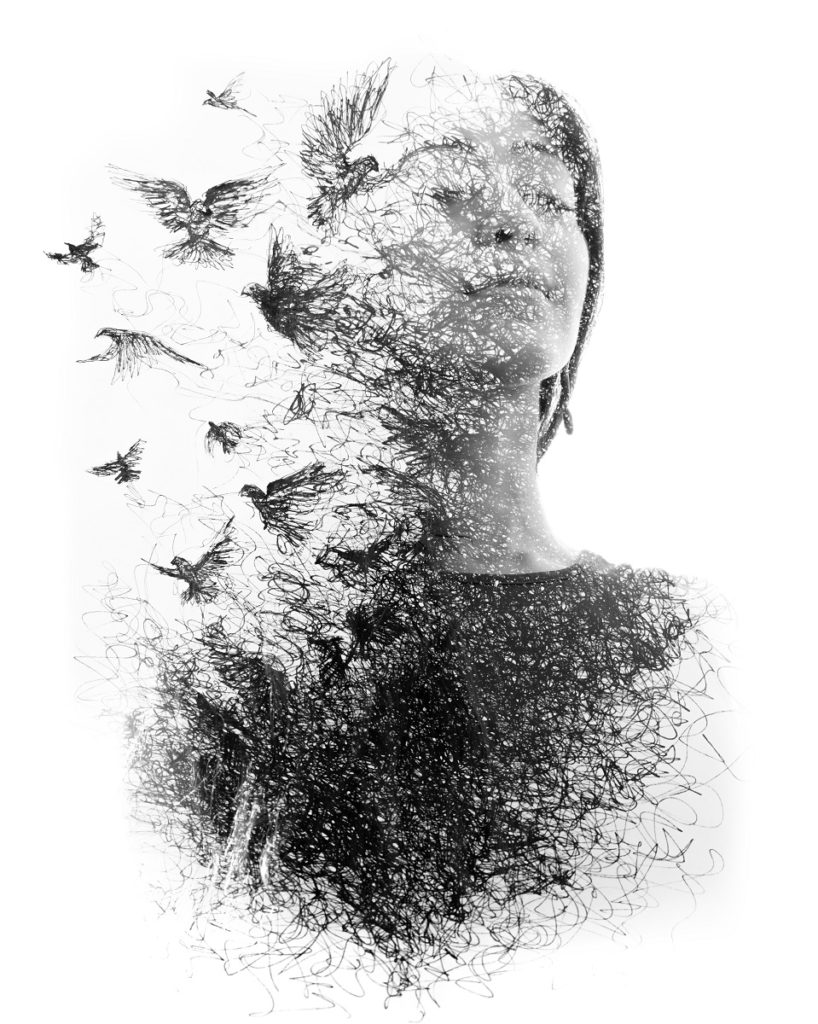For those of you already acquainted with the idea of “autosuggestion,” this blog post may be old news. On the other hand, it may be a good opportunity to pass this on to someone who is sick, unsuccessful, and/or depressed. If you’re not familiar with autosuggestion but still identify with these negative emotions, I invite you to read further and learn about this easy path out of the darkness.
Yes, the yellow brick road of health, success, and happiness may finally be yours while you’re still living in this material world. You may find that focusing on progress rather than perfection will help you stop uselessly pining over the state of your life’s journey.
How do I know? Because I was once in that place, and I tried everything, including positive thinking, mantras, vitamin pills, and diets to help me get out of it. However, it wasn’t until I discovered this simple little secret that I finally found peace and acceptance. Allow me to share my own experience and also tell you about one of the clients I’ve helped with this practice. But first, a little background.
Where Do Nagging Negative Thoughts Originate?
Many of our negative thought patterns and habits are formed in childhood or in response to a traumatic experience.
I say this because we are meant to be healthy, positive, and well-adjusted individuals. Yet when we experience an unexpected trauma such as PTSD, for example, through no fault of our own we can start internalizing negative thoughts and habits, which makes life more difficult than would normally be the case. I’m sure many of you know exactly what I mean.
In my case, I learned that my negative thought patterns were related to a prebirth experience. Yes, these life-changing experiences can even happen while you’re still in the womb! For years, I endured a deep sense of anticipation that some dangerous event might happen that day or some day in the future. I now know that this is called “anticipatory anxiety.” The constant tension was nerve-racking to say the least. As far back as my childhood I would wake up feeling fearful and anxious for no obvious reason. Even when sleeping I was given to tense, scary dreams.
Living Life Without Fear of Living
Fortunately, I was able to help myself, and I can now help others resolve these issues. In fact, my own experiences make me more empathetic and less critical of those who live in such a dark emotional state. In my case, I made it through high school, business college, and a career in the commercial market before finally becoming a nutritionist. I found great joy in working with others while delving deeply into the study of foods, whole food supplements, and the how to of maintaining good physical, mental, and spiritual health. Yes, we need to nourish all three aspects of our health and well-being.
I’m convinced that many of these negative thought patterns arise from some known or unknown childhood experience that lodges itself in the unconscious mind, which is where we keep even our most insignificant experiences and thoughts. Healing the unconscious mind from negative thought patterns is far different from dealing with a real psychosis such as mental illness. For doctors and/or holistic practitioners, confusing the two can lead to the wrong diagnosis or protocol, and then to losing the client.
My own traumatic experience happened when my mom was in her sixth month of pregnancy with me. She took a severe tumble and unfortunately fell forward, landing on her belly. Because of that fall, I was born with multiple physical birth defects, which were later only somewhat resolved after many surgeries. What a traumatic experience for a child!
From my prenatal experience to the subsequent painful surgeries as a child, that jarring fall stamped me with a deep, negative mental imprint. As I grew older, I searched through endless books on positive thinking and studied the latest research on foods, herbs, and supplements. But as the great Biblical passage Matthew 7:7 states, “Ask, and it shall be given you; seek, and you shall find: knock, and it shall be opened to you.” I sought the answer, and I found healing.
It was nearly imperceptible at first, but my negative thought patterns eventually began to disappear. As my tendency to harbor negative thoughts and emotions slowly lessened over time, I finally found a sense of peace. And although I expected some of my normal habits or interests would change, I am still all that I was. I’m just not as hypersensitive to lurking dangers as I once was. I now make it part of my practice to share my experience with others who are still seeking. I hope that my recommendations will help some of you find the answers you seek.
Does Providence Really Exist?
Each of us must determine if we’ve ever experienced providence, which is described as an act of divine care or guidance. That happened to one of my clients who unfortunately suffered from deep depression. For most of her life she, never found a solution that made a difference. Even the psychologist who prescribed her antidepressants determined that they only made her condition much worse—which, of course, did not surprise me!
My original protocol was to start her off with the known happiness foods I talk about in my blog post “Be Happy—No Matter What,” as well as some key whole food supplements to nourish her brain neurotransmitters. This did make a slight difference, but neither of us felt that she turned the corner. What to do? My approach is always to research, research, and then research some more, including consulting with other practitioners.
During my research, I happened on a book by Emile Coué called Self-Mastery Through Conscious Autosuggestion. Originally published in 1920, I can sincerely tell you that discovering it was, in my opinion, an act of providence. It made a huge difference in my client’s mood, but it also turned out to play a big role in solving my lifelong anticipatory anxiety.
I’ve never experienced the level of depression my client suffered, but I can confirm that this book brought her to a new beginning. After we worked together and I taught her to follow the wise counsel of Emile Coué, she began to come out of the deep depression she endured for many years, as I did with my own condition.
Personal note: If you are a high-stress individual and tend to be impatient, your recovery may be slower but I encourage you to keep the practice up as it may also assist you to become more patient and calm. This technique is primarily meant to help people overcome deep-seated negative emotions and trauma. In my opinion, stress is a different set of circumstances. Living stress-free takes a different remedy, and I therefore suggest reading my blog post “The Longevity Secret: Part I.” As for impatience, well if this does not help you then indeed it is in the realm of spiritual nourishment.
As I mentioned above, the change in my condition was almost imperceptible at first. It took several months before I began to notice the subtle change. It is of great importance that you practice this technique daily as you follow the easy instructions outlined below. My client’s depression also lifted slowly and by small degrees it disappeared. She now teases that she cannot get depressed if she tries!
This Is Not a Miracle
This technique may sound miraculous, yet it is not. As I understand it, you are simply feeding your unconscious mind with a carefully formulated phrase from Coué. Perhaps this tool simply brings you back to the place you were meant to be before the trauma. It allows you to unburden yourself of whatever negative experiences got lodged in your mind.
Coué explains the unconscious mind is able to reset. This reset can erase negative thought patterns or help repair an injury or health condition that hasn’t responded to regular medical treatment because it was caused by a long-ago trauma. I will always wonder how Coué discovered these exact words. Were they a gift from God to help humanity through the pitfalls of life? Or was it a fortunate discovery showing how the mind works with the body and spirit?
Whatever is being treated, or whatever outcome is desired, Coué cautions that it must be within the confines of nature. Otherwise the unconscious mind will not allow the change. So do not attempt to manipulate this therapy. Practicing this technique won’t give you wings, help you grow a missing limb, or do any other ridiculous thing that is obviously not within the confines of the natural law.
Remember, I said earlier in this blog post that “we are ideally meant to be healthy, positive and well-adjusted individuals.” I believe that’s what this technique can help us with. Unlike other techniques to improve positive thinking, this isn’t a way to manifest what you want but rather a way to help you achieve your full potential by overcoming things that may be holding you back.
Who Was Emile Coué, and What Exactly Is Conscious Autosuggestion?
According to this brief biography, “Emile Coué was a French psychologist and pharmacist who has deeply influenced future generations, especially in the field of psychology, and made important contributions to the development of a positive thinking system…In 1913, Coué and his wife founded the Applied Psychology Association [in Lorraine, France]. His book Self-Mastery Through Conscious Autosuggestion was published in England (1920) and in the United States (1922)…In the following years, its reputation began to spread all over the world, especially in America. He tried to treat more than 40,000 people in his clinic.”
The Wikipedia page on autosuggestion describes the “Coué Method” as using our imagination to change our subconscious or unconscious thoughts, which in turn can help us find solutions to some of our problems. This article further states:
Although stressing that he was not primarily a healer but one who taught others to heal themselves, Coué claimed to have affected organic changes through autosuggestion.
In the preface of his book, Coué explains that our “will,” in and of itself, is utterly useless in changing the deep-seated negative thoughts that lead to undesirable emotions lodging in our unconscious mind. He discovered that attempting to bring about change simply by willing it results in frustration and failure.
Coué presents ample proof of this phenomenon, but I leave it to you to read about it in his book. The imagination—not the will—is the main key to removing deeply lodged negative chatter that is ever-present in the unconscious mind.
You may be asking yourself: “Great! But how do I imagine or think away my negative thoughts and emotions? How do I constantly replace negative thoughts with good thoughts when the dark ones just keep coming back? It seems nearly impossibly since we have no convincing mental picture of how our thoughts work.”
Finding a way to do this was his greatest discovery. And simple as it is, it works! But before I tell you more, let me state some of his more interesting findings. The following are some excerpts from his book:
From page 25:
-
-
- When the will and the imagination are opposed to each other, it is always the imagination which wins, without any exception whatever.
- In the conflict between the will and the imagination, the force of the imagination is in direct ratio to the square of the will.
- When the will and the imagination are in accord, one does not add to the other, but one is multiplied by the other.
- The imagination can be directed.
-
(The expressions “in direct ratio to the square of the will” and “is multiplied” are not rigorously exact. They are used simply as illustrations intended to make my meaning clearer.)
From what has been said, it would seem that nobody should ever be ill. This is quite true. Every illness, ALMOST WITHOUT EXCEPTION, can be made to yield to autosuggestion, however bold and however daring my affirmation may seem. I do not say that it always does yield, but that it CAN BE MADE TO YIELD, which is different.”
And from page 109:
A lady declares: My husband suffered from suffocating attacks of asthma for many years; indeed, he had such difficulty in breathing that we feared a fatal issue. His doctor had given up. He was almost entirely cured of his trouble after a single visit to Mr. Coué.
The above is an impressive testimony, and there are many others.
How to Practice Conscious Autosuggestion
You will need to use a very thin rope or material. Form 20 knots spaced apart, or use a 20 beaded chaplet. (This is similar to a rosary but with only 20 beads. I had a beaded chaplet made for myself.) Next, follow his directions below.
Page 118:
Every morning on awakening and every evening as soon as you are in bed, close your eyes, and without fixing your attention on what you say, pronounce twenty times, just loud enough so that you may hear your own words, the following phrase, using a string with twenty knots in if for counting:
“Day by day, in every way, I’m getting better and better.”
Now notice carefully how this universal phrase covers every conceivable situation or condition. Day by day, the unconscious mind will, as Coué found, bring about results. There is no need to think any special thoughts, positive or otherwise, nor do you need to express a desire for any one thing. Maybe we don’t need to concentrate so hard or constantly stress on what we want since what is best for us—and what makes us healthy, positive, and well-adjusted—will come at the right time as the unconscious mind slowly but surely begins doing exactly what this simple phrase commands…to day by day, in every way, make you better and better!
Think, my dear reader, if we do this with faith and consistency, what marvelous changes may come to be.
[xyz-ihs snippet=”Begin-Authors-Note”]Afterthoughts from the Traditional Cook
Except for Psalm 22, no other positive phrase, to my knowledge, has ever produced the results experienced by more than 40 thousand people who tried Emile Coué’s technique. As for myself, I am interpreting it as God’s will, which desires only what is best for us. We just need to find the right words that speak to the unconscious mind. Maybe that’s where the soul resides. We will never know, and to each his own. Best wishes as you become the healthy, positive, well-adjusted person you are meant to be.
Maria Atwood, CNHP
“Day by day, in every way, I’m getting better and better.”
Disclaimer from Maria Atwood, CNHP: I am a Certified Natural Health Professional, CNHP, not a medical doctor. I do not diagnose, prescribe for, treat, or claim to prevent, mitigate, or cure any human diseases. Please see your medical doctor or health practitioner prior to following any recommendations I make in my blog posts or on my website.
Images from iStock/SHODOgraphy (main), Victor_Tongdee (woman and birds), eyepark (holding beads), spukkato (sad woman).




